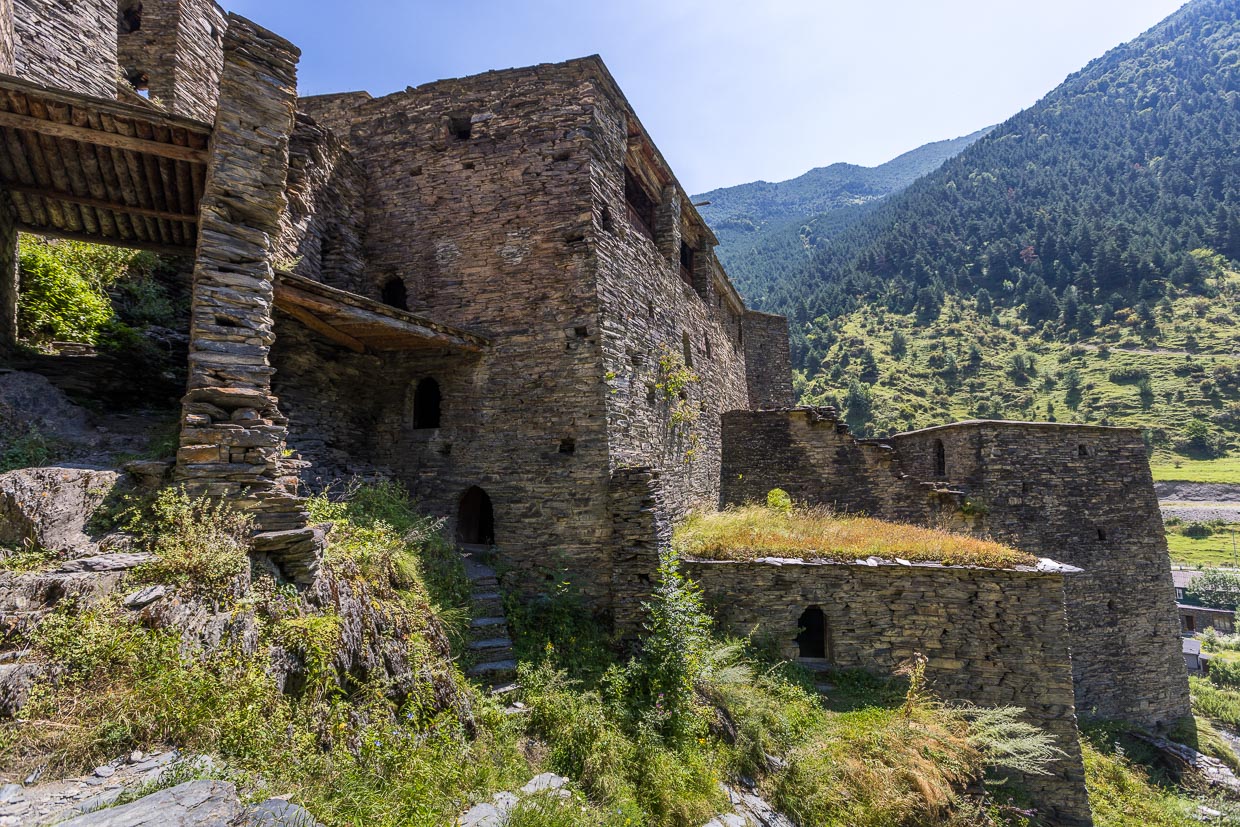The Tbilisi Skybridge residential complex in the Georgian capital Tbilisi is known worldwide for its breathtaking connecting bridges at dizzying heights. Locals appreciate them above all as the fastest footpath between the districts of Saburtalo and Nutsubidze.
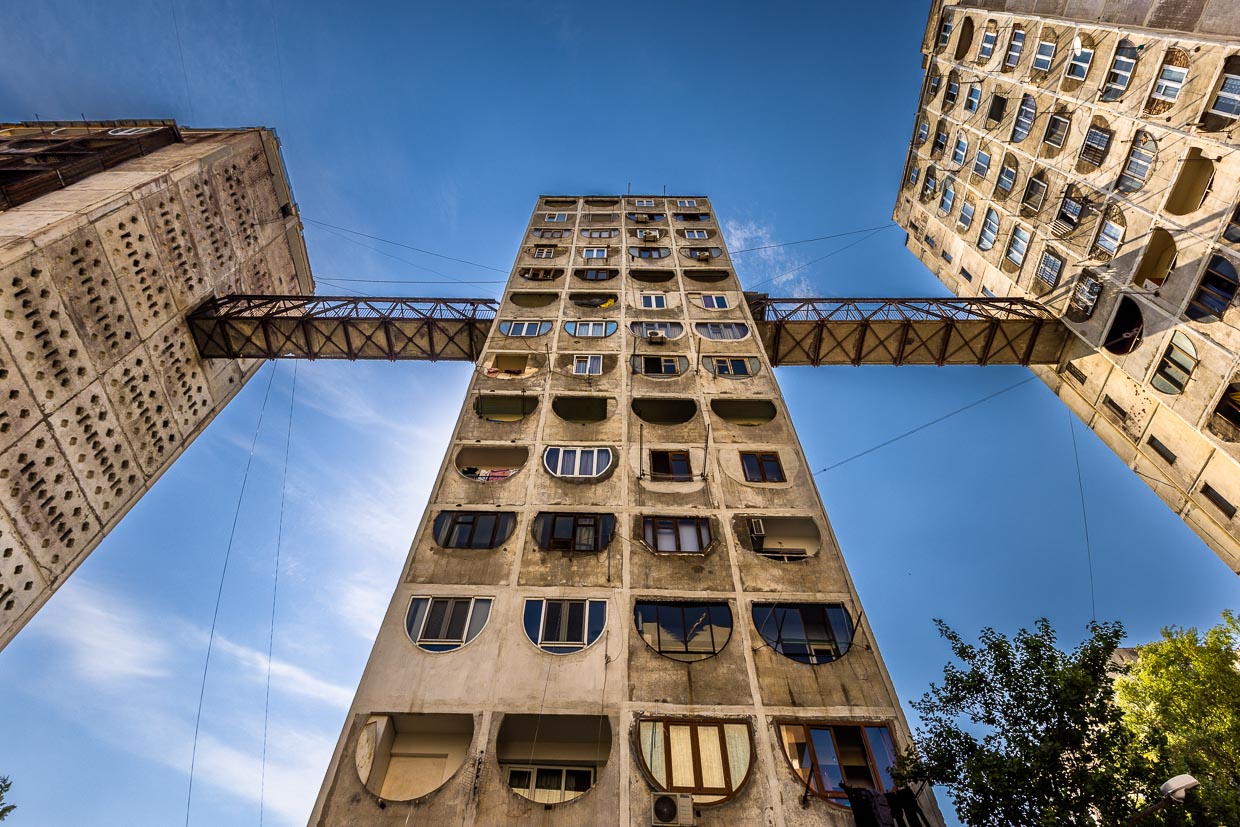
On hot summer days, the climb up the public serpentine roads can be very strenuous. Those who know their way around therefore use the first building in Saburtalo, travel to the 14th floor for 20 Tetris (7 euro cents) and reach the exit in Nutsubidze via open bridges between the three buildings. This saves you 20 minutes! The bridges are located on the 14th floor of the lowest building and on the 12th and 10th floors of the others.
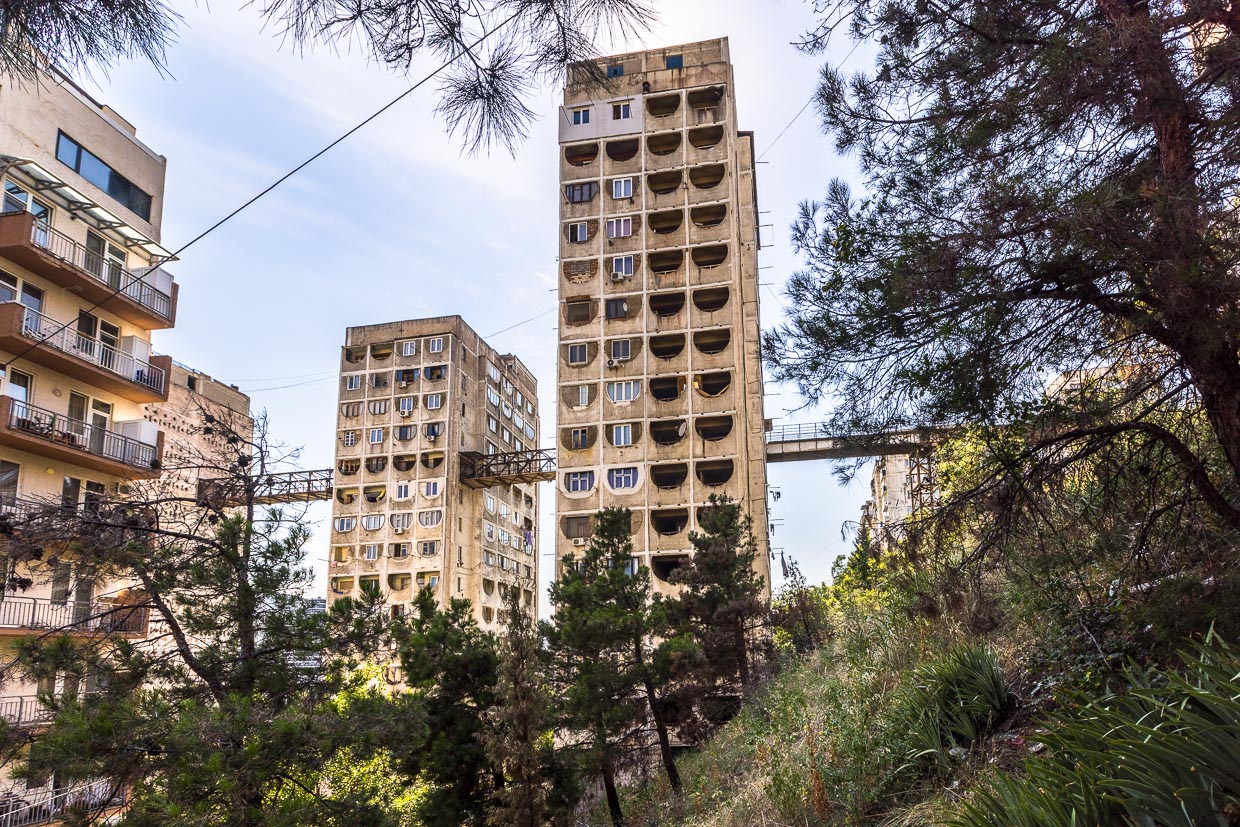
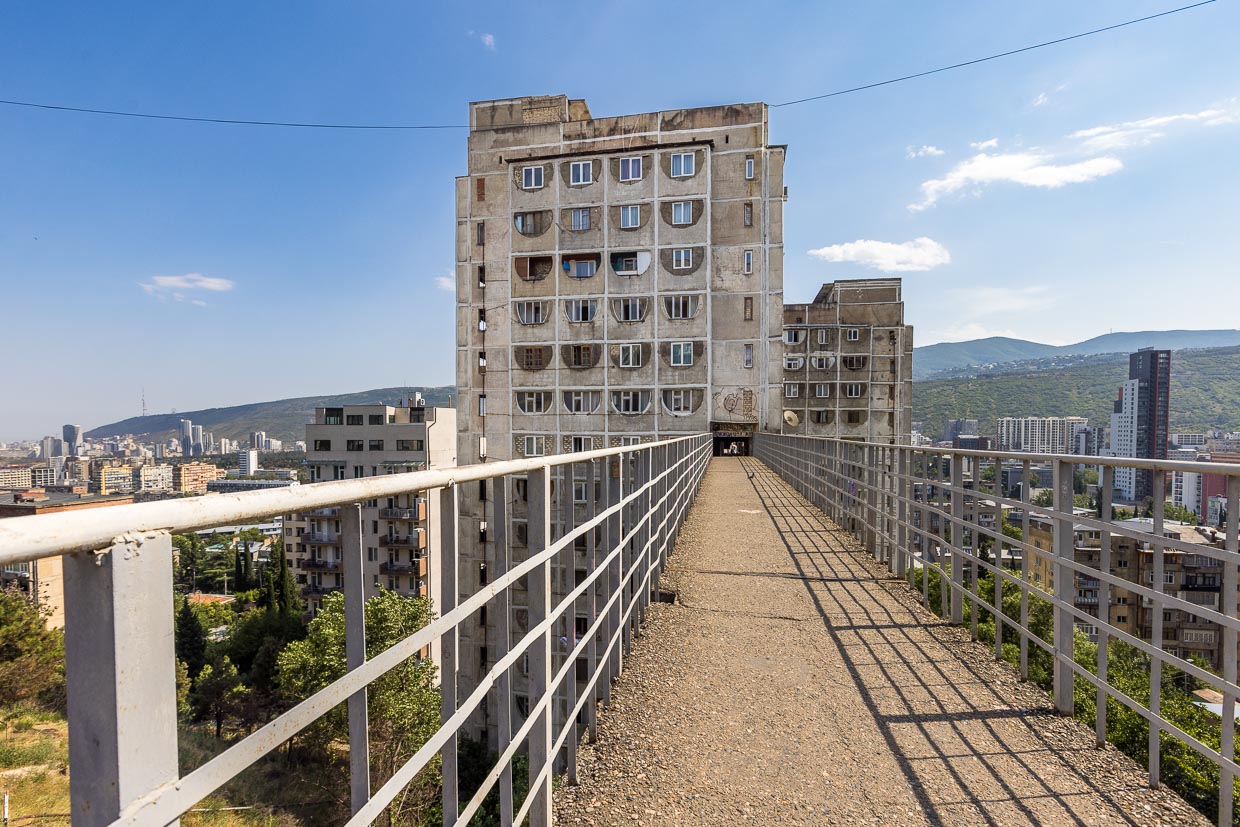
Popular architecture for 50 years
The architecture of the residential complex was groundbreaking 50 years ago. It combines housing estate and thoroughfare and represents a fusion of private and public space – a motif that is repeated everywhere in Tbilisi. Despite the distance of 11 kilometers to the historic city center, the bridges of the building complex continue to attract visitors.
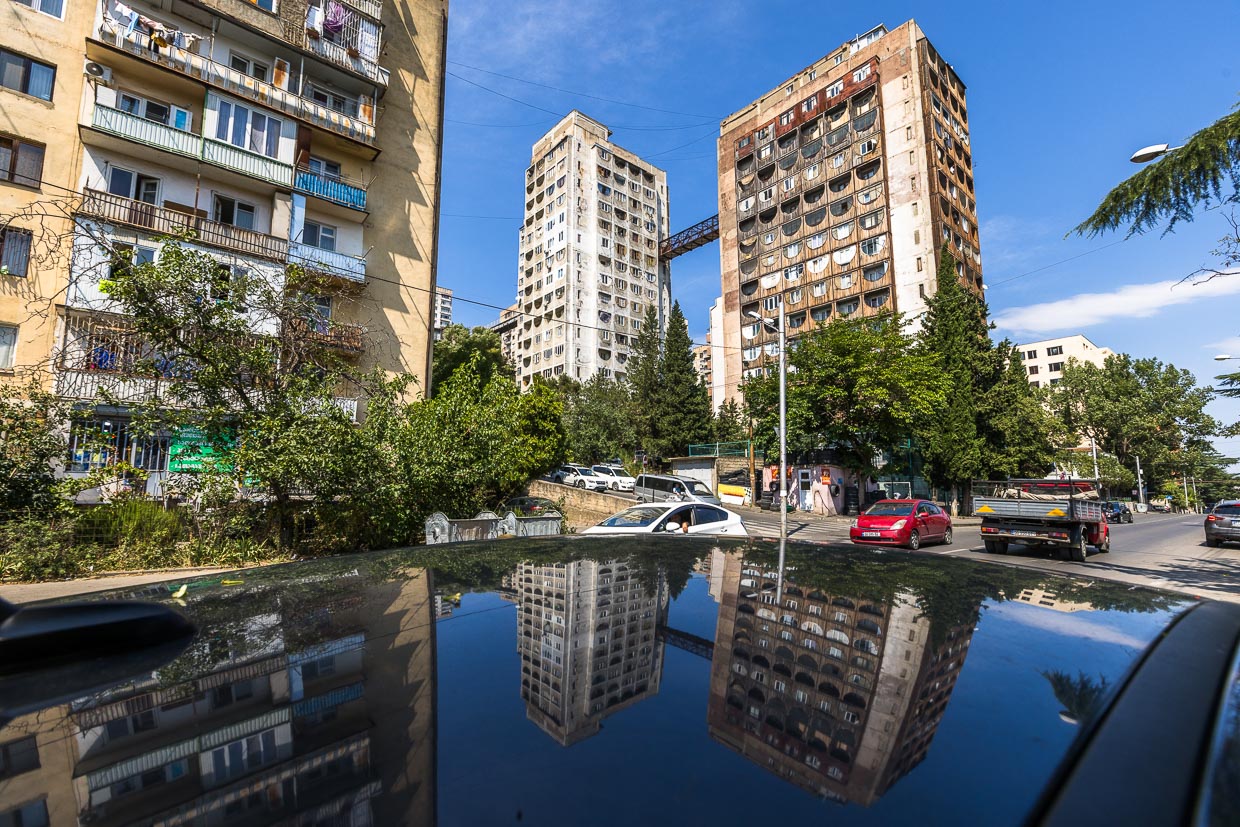
The building, originally designed as the “Shatili” residential complex by architects Otar ‘Toni’ Kalandarishvili and Gaioz ‘Gizo’ Potskhishvili in 1974, was considered ultra-modern at the time. It differed from the usual Soviet brutalism and used Georgian design elements. The mahogany wood and horseshoe-shaped façade elements are a nod to the carved balconies and shushabandi glass galleries in the old town of Tbilisi. Originally, it was even planned to use the hot water supply from the natural hot sulphur springs after which Tbilisi is named (Georgian tbili = warm).
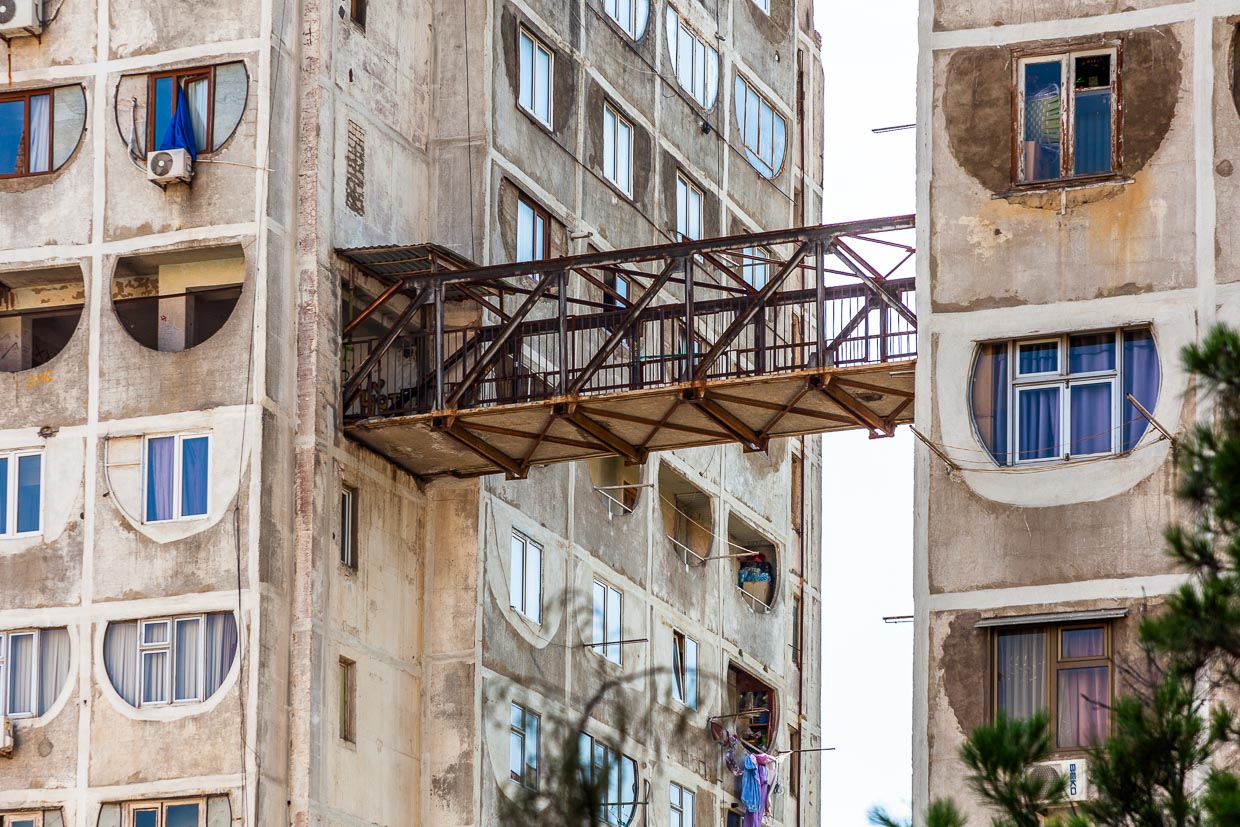
Over time, most residents have remodeled their homes by adding semi-legal extensions and filling balconies with bricks to create extra space. The result is a colorful jumble, with the facade of each apartment revealing something about the family that lives there.
Unusual elevator arrangement for harmonious coexistence
The residents of the residential complex can coexist peacefully with tourists and passers-by, as the public elevator is only started with one coin per person and only has two stops: on the first floor and on the 14th floor, where the connecting bridges between the buildings are located. Although the stairwell is not locked, it is not an alternative because the door to the bridges on the 14th floor can only be opened with a chip card for residents.
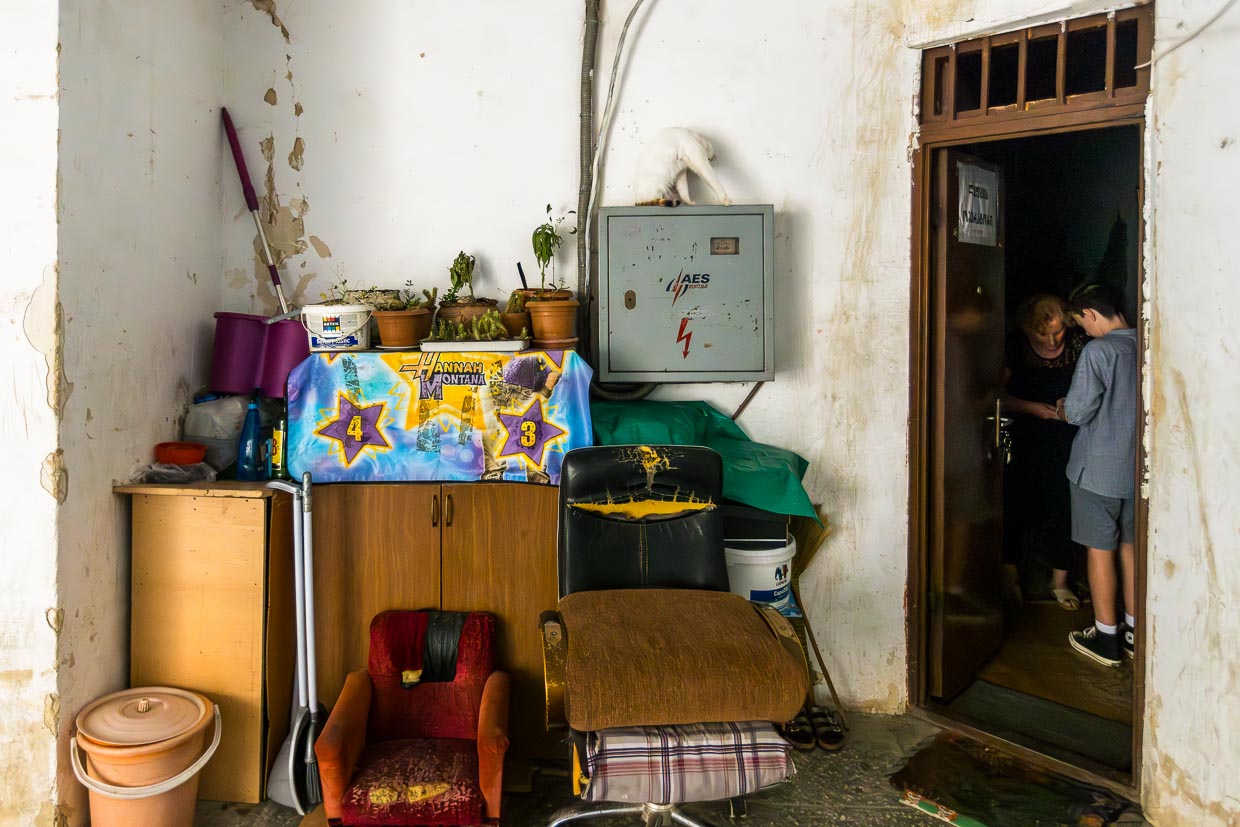
We set off on our own by metro and changed to the Saburtalo line at Station Square. It’s not far from the State University metro station and you can soon make out our destination among the normal prefabricated buildings. Luckily, Demetre, a student who spoke fluent English, came up to us when we reached the Skybridge houses and explained everything to us. For 10 lari (3.50 euros), he even offered to give us an exclusive tour of the building and provide all the coins we needed. He went to Mzia, a woman who lives next to the elevator and has been taking care of its smooth operation for a long time. He exchanged the 20 tetri coins for the outward and return journey with her. The elevator only works with these coins, which have become rare. As a tourist, you hardly ever have to deal with the small tetri coins, as you already have to contend with the Georgian lari bills.
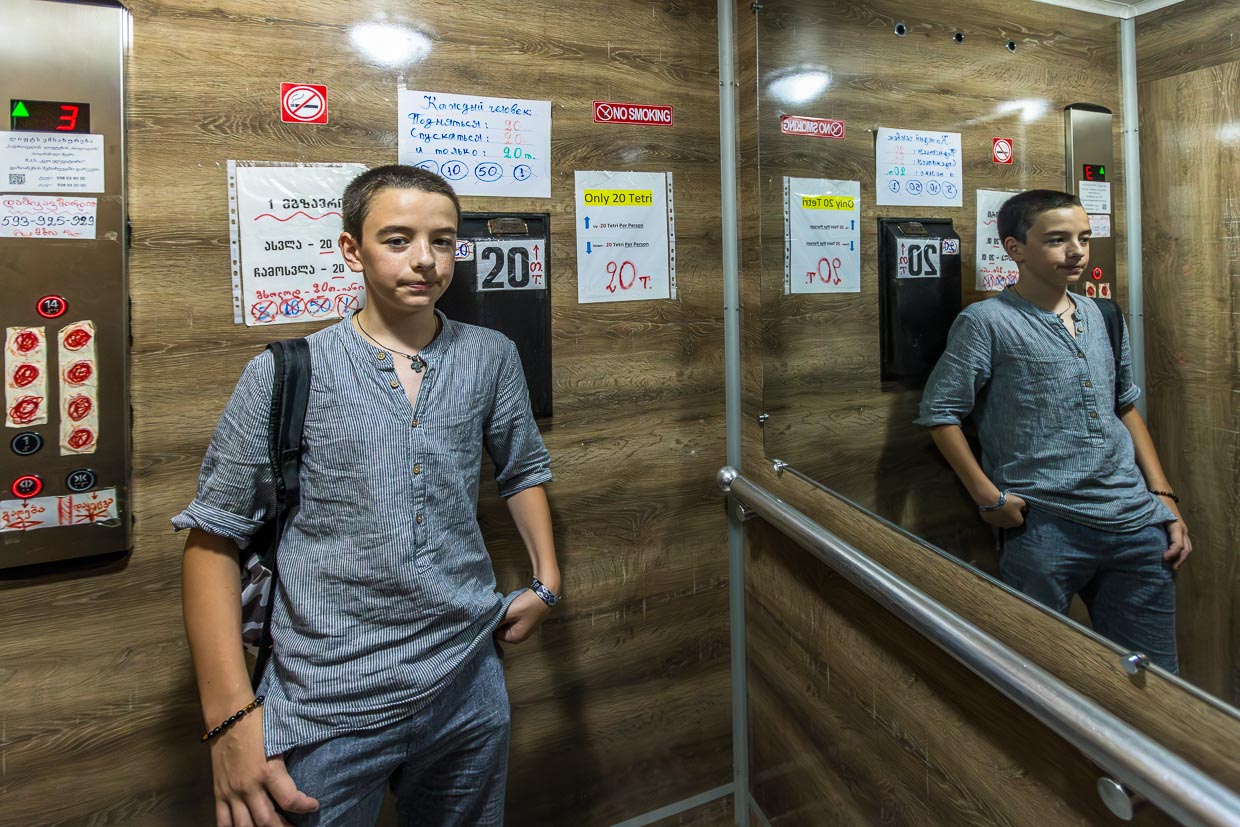
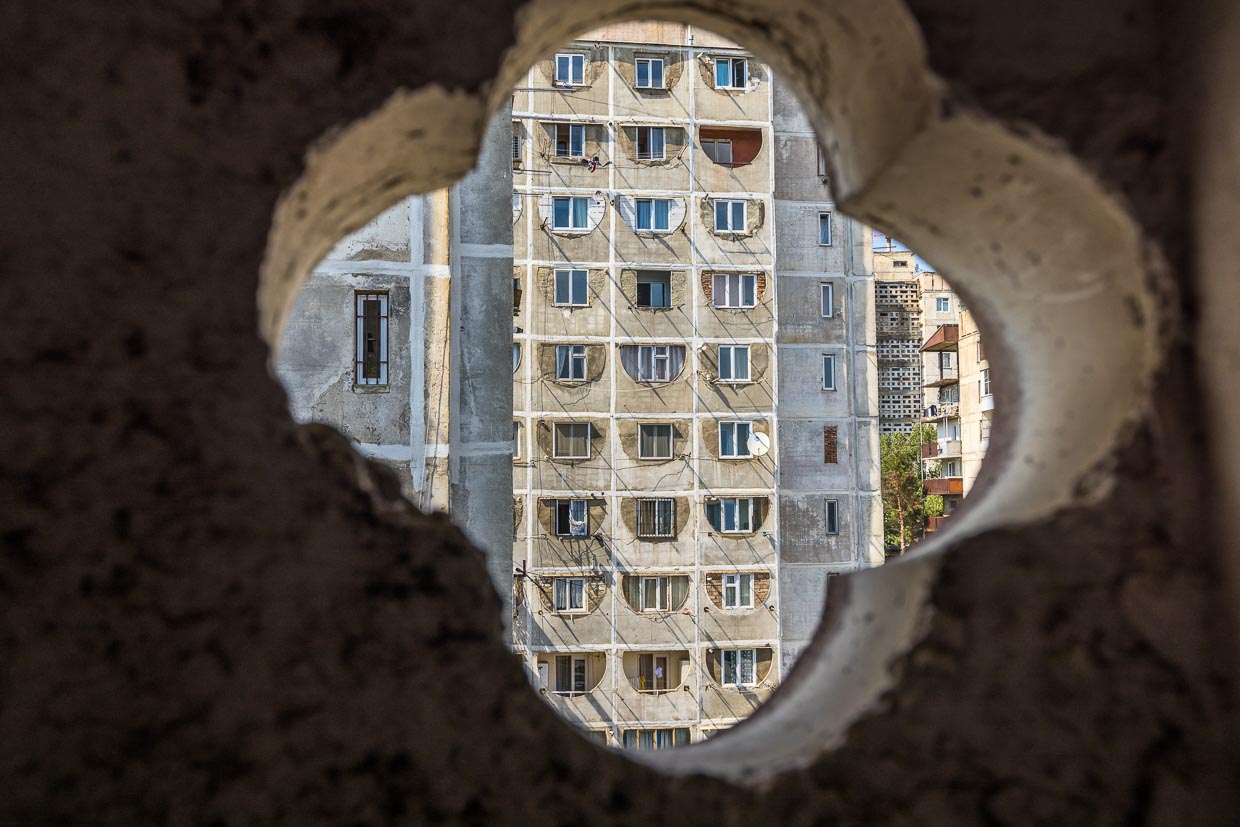
Particularly safe in an earthquake zone
The bridges are old and a little shaky. Tbilisi is also located in an area with frequent earthquakes. Despite a few holes in the concrete under our feet and a slight movement on a windy day, they are safe. Hundreds of people cross them every day and because they are connected to steel girders, they even have an advantage over stand-alone buildings.
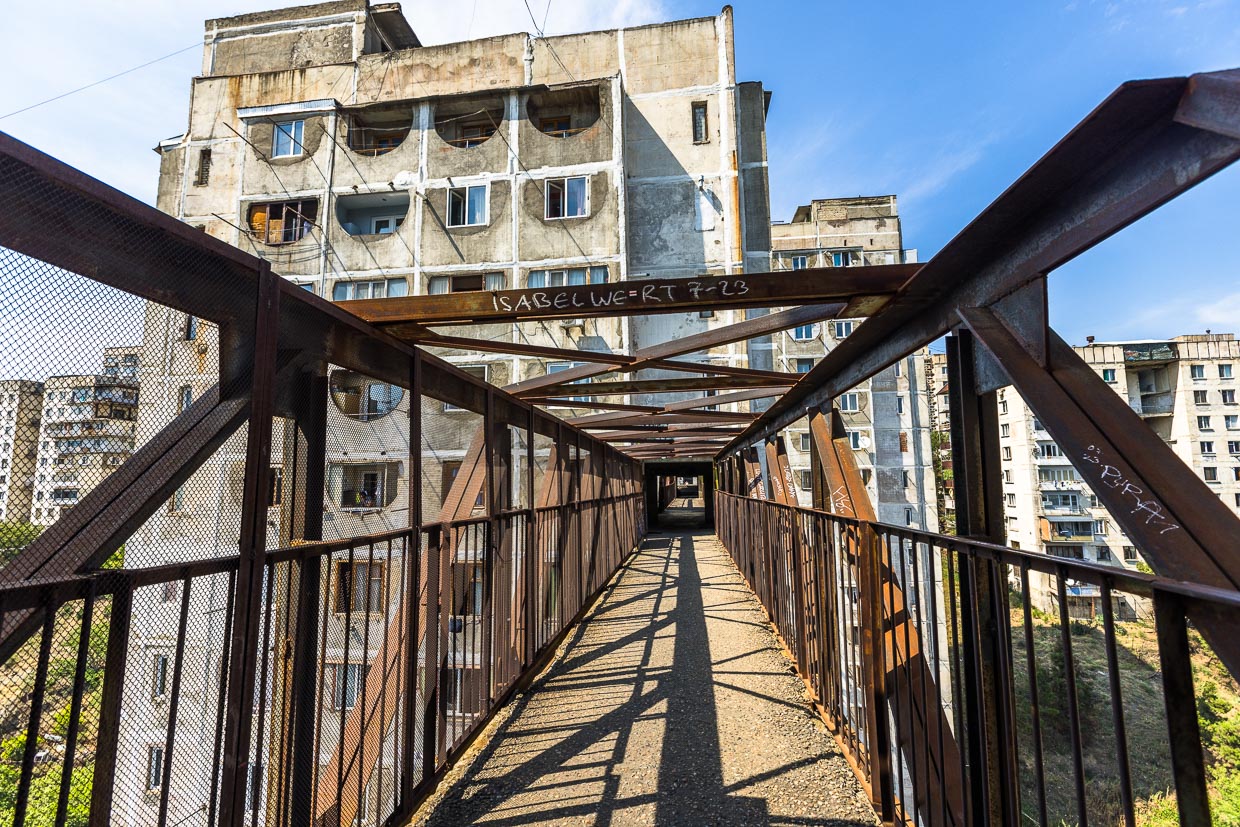
How do you find the Skybridge?
If you don’t want to take a guided tour, you can try it on your own like we did and take the elevator in the first house (with the mahogany façade). You should have enough small change with you for the way back, as no money is exchanged in the house.
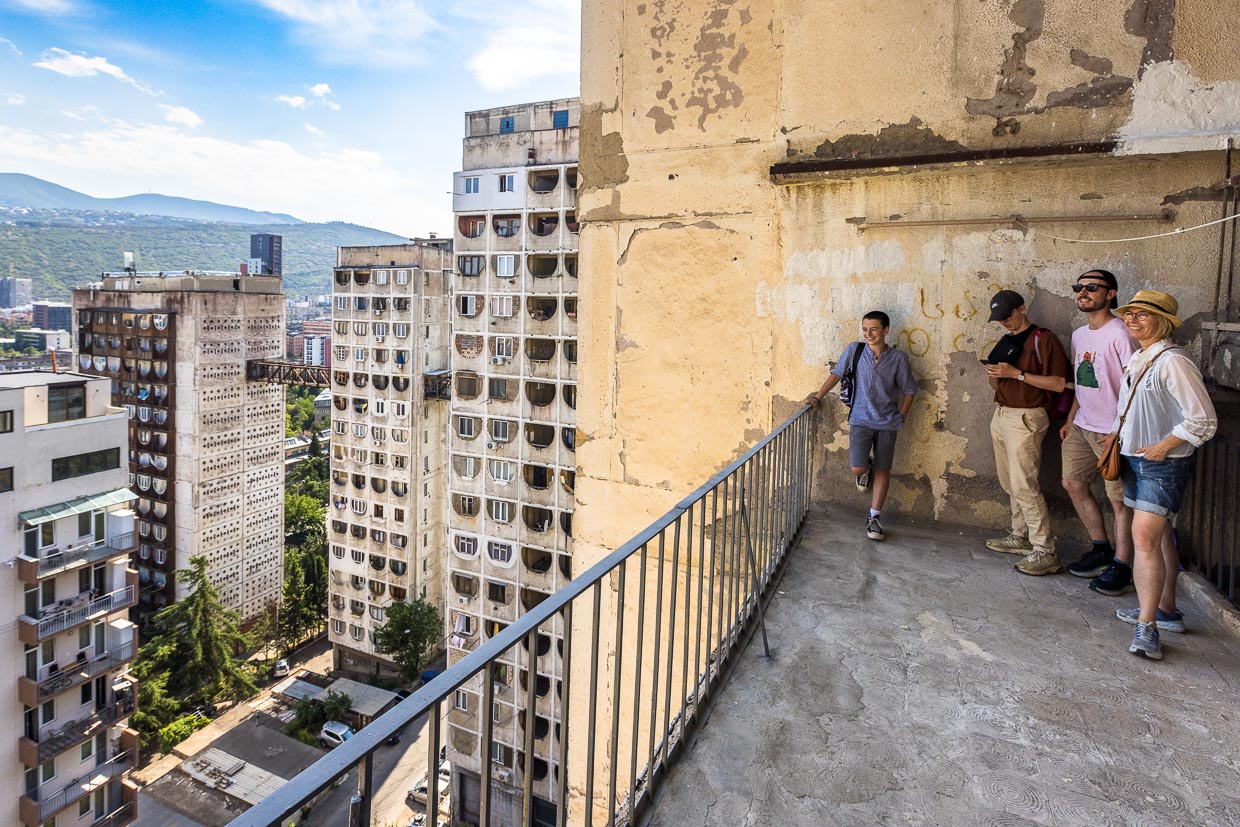
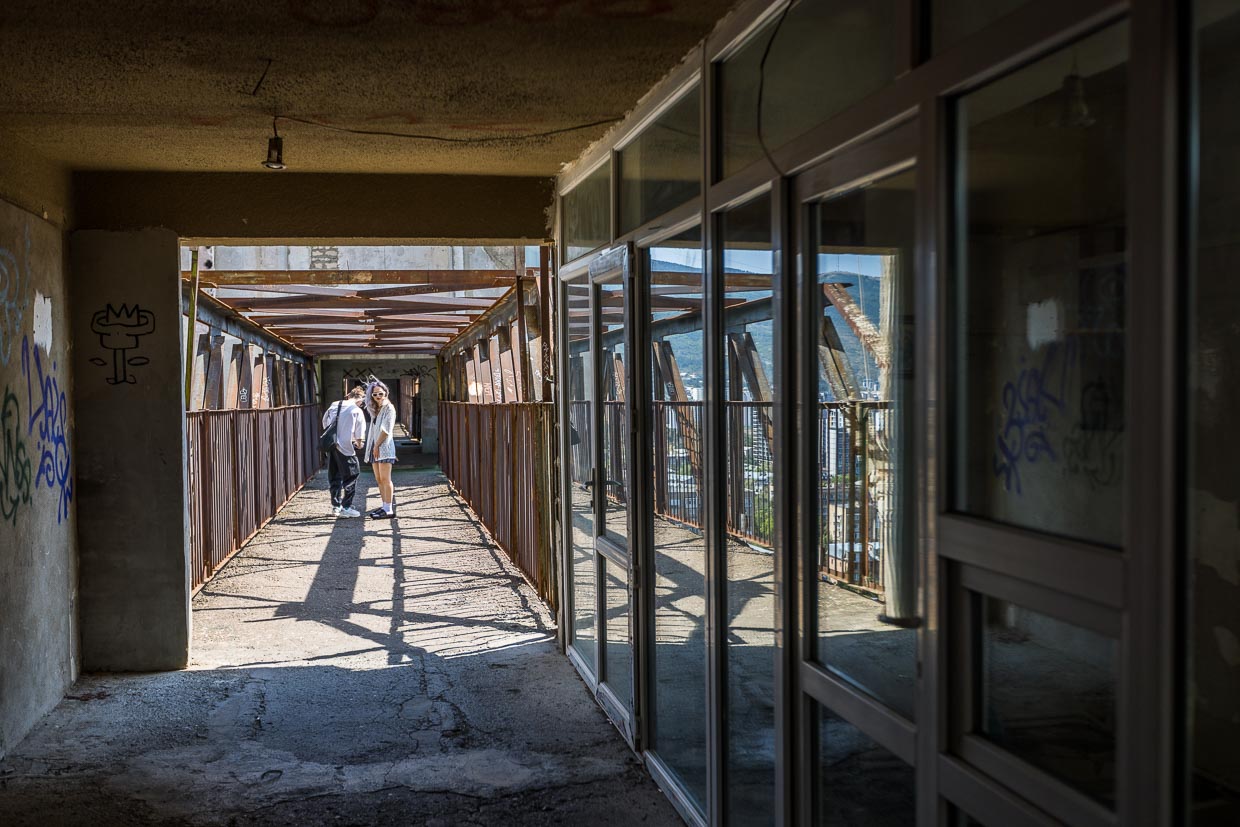
Bridges in Georgia
On our trip through Georgia, we discovered that bridges play an important role in Georgian architecture – both as a functional design element for connecting buildings and as architectural landmarks. The Tbilisi Architecture Archive still lists the skybridge under its original name, Residential Complex “Shatili”.
Of the many fortified villages we saw on our hike through Tusheti and Khevsureti, only one was never conquered. The defenders were constantly able to regroup via roofs and bridges between the houses. You can find out more about Georgia’s turbulent history in another article.
